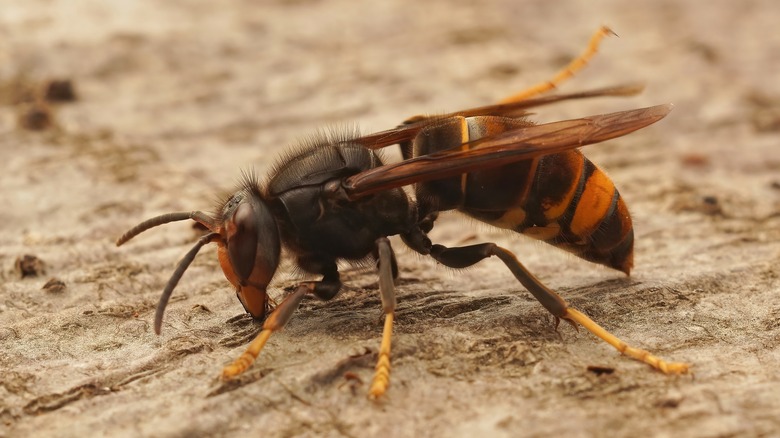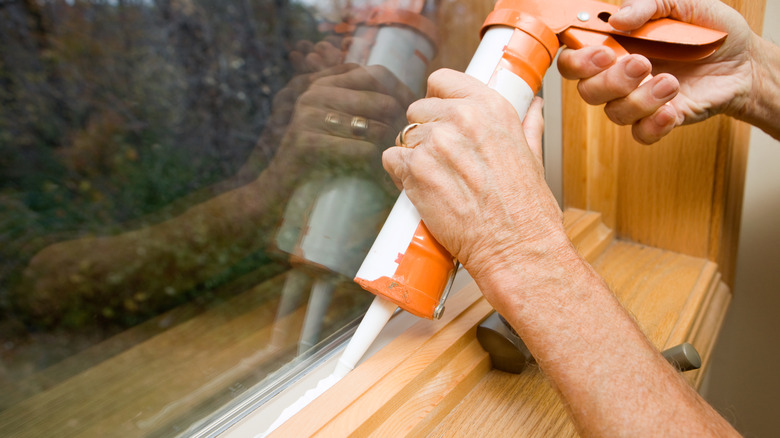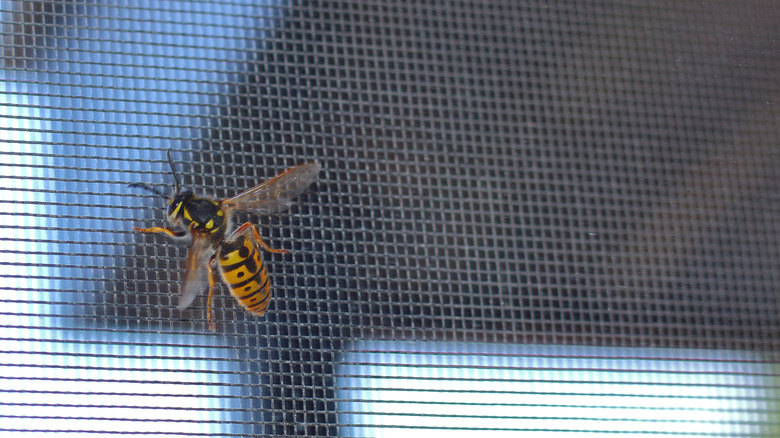The Sneaky Way Wasps Are Getting In Your Home (And How To Prevent It)
Even compared to other pests, wasps are one of the most dreaded insects for homeowners to see around the yard. However, as bad as it is to see them outside, it's even worse to find them hovering around your living room. A wasp may enter your home to look for food, a nesting site, or to hibernate in the winter, and they are more likely to come into your home if they can find a great way to do it. If you leave your doors and windows open for prolonged periods, they could make their way inside. If you're not in this habit, your home may have cracks and gaps that wasps are sneaking into. Finding them and sealing them will be key to preventing wasps from entering your house.
Wasps are dangerous — a sting can lead to a lot of pain and potentially an intense allergic reaction. In some cases, their stings can even be fatal. Unlike some types of bugs and pests, wasps have a tendency to be aggressive, particularly in the late summer and early fall, so there is a significant chance of getting stung by one. If wasps have made their way into your home, it's kind of a big deal. After you get a wasp out of your house, you need to take steps to prevent them from entering again later on.
Identifying and fixing cracks and gaps
There are many places where your home could have cracks and gaps, so you'll need to inspect the exterior of your abode to identify them. Doors and windows are some of the first areas where you'll want to check for holes and cracks that could be letting in wasps and other pests. You should also take a closer look at any pipes, cables, or vents that are connected to your foundation and the outside of your home.
Once you've discovered potential wasp entry points, take steps to get rid of them. Use silicone caulk or weather stripping to seal gaps and cracks you've noticed. Although there are some things you should know before caulking your window, the process is fairly simple. Grab a caulk gun and use it to apply caulk to your door or window frame, using a color that's close to the color of the frame. Adding weatherstripping is an even simpler process. You'll simply need to buy some weatherstripping and then apply it like tape to doors and windows.
For large gaps, these supplies may not be enough. Consider using expanding foam to seal larger holes in your home's exterior. To add more protection to windows and doors, you may also want to install screens to ensure that wasps will need to work extra hard to find a way inside.
Prevent wasps from being attracted to your home
Sealing entry and exit points shouldn't be the only step you take to protect your home from wasps. Also ensure there's nothing in and around your home that's attracting them. Keep your yard well-maintained and trim shrubs and vegetation, particularly focusing on any that are hanging over your home. These serve as good nesting sites for wasps and make it more likely that they'll come to your yard. Remove standing water around the yard and eliminate food sources that can help sustain them and give them an environment to thrive in too. Keep garbage cans closed, remove food, and keep your kitchen clean to avoid attracting wasps.
You'll also want to take steps to get rid of any nests that have already been built around your home. You can try using some easy hacks that work to get rid of wasps. If you have a serious infestation, however, you may want to hire a professional to remove the pests as safely as possible.


